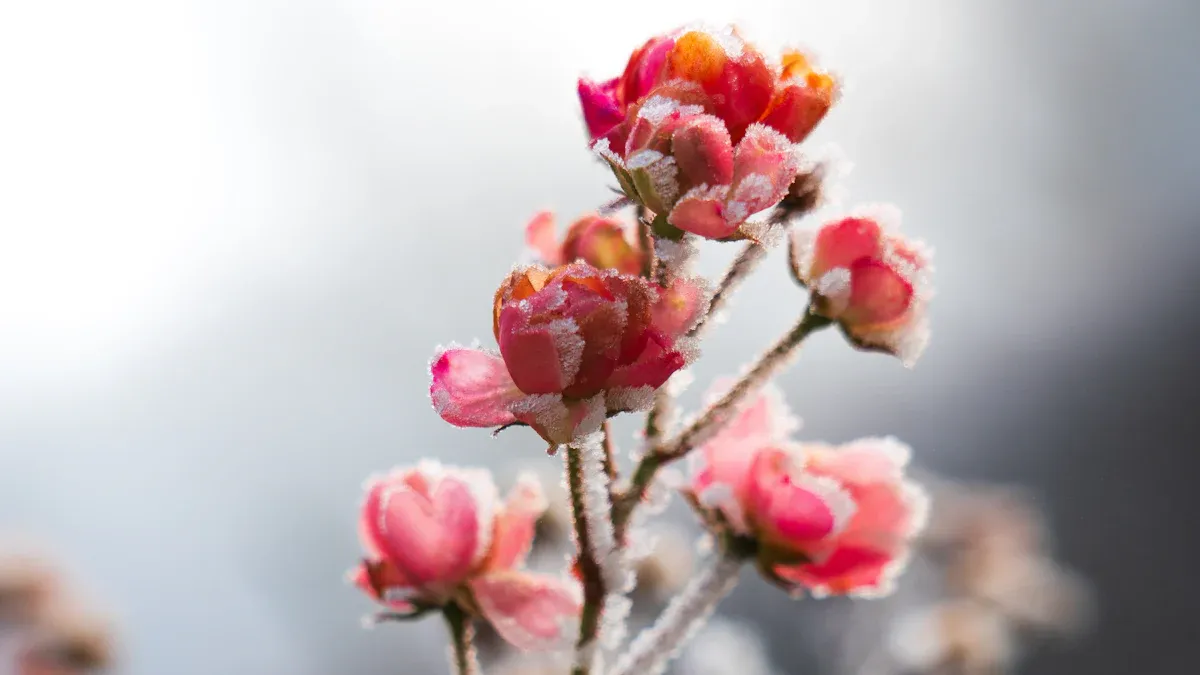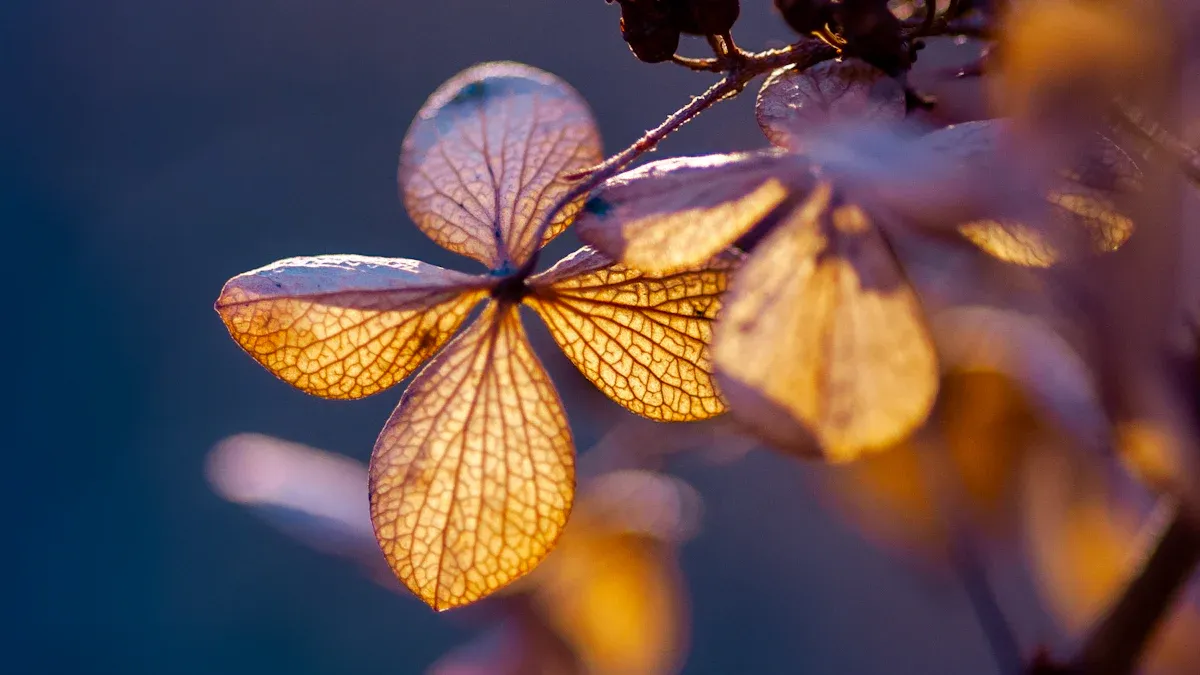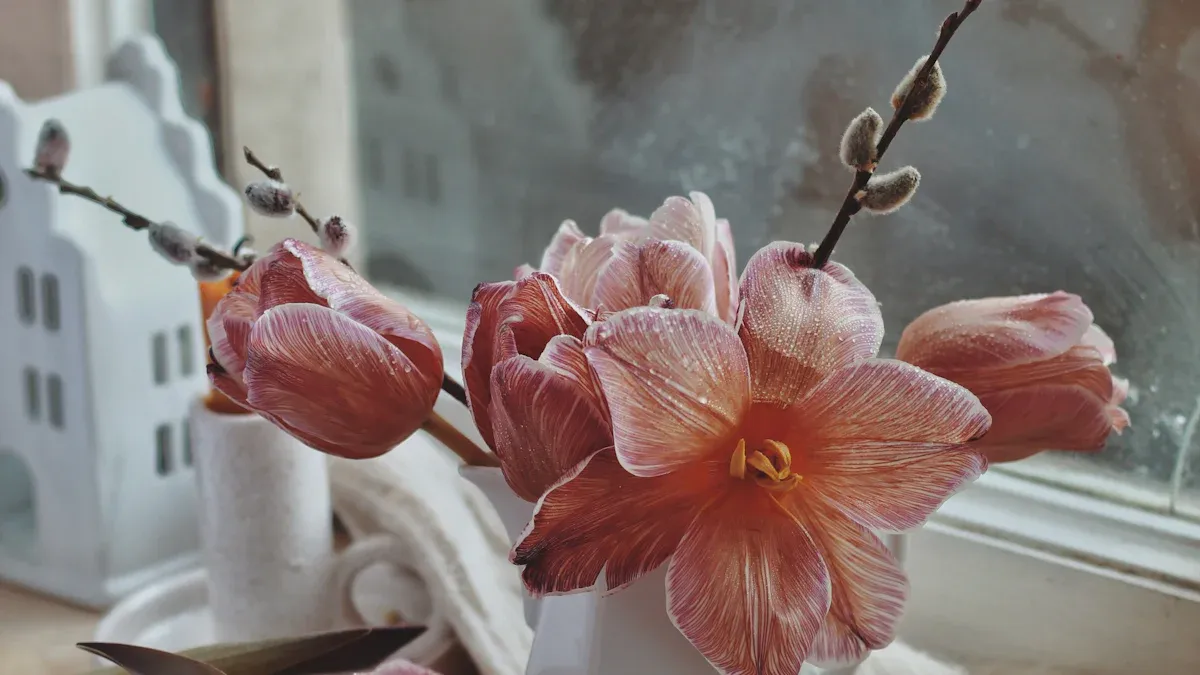
Winter gardening offers you a unique chance to enjoy vibrant colors in your landscape with the best flowers. You can grow beautiful flowers that thrive in colder conditions, like pansies and snapdragons. This season brings joy and a sense of accomplishment as you nurture your garden, even when temperatures drop.
Key Takeaways
Pansies and violas are excellent choices for winter gardens due to their hardiness and vibrant colors. They can survive freezing temperatures and brighten your landscape.
Proper care is essential for winter flowers. Ensure well-drained soil, regular watering, and mulching to protect roots from frost.
Winter gardening offers benefits like moisture retention, natural pest control, and improved soil health, making it a rewarding activity for gardeners.
Best Flowers: Pansies

Features
Pansies are among the best flowers to grow in winter, thanks to their vibrant colors and remarkable hardiness. You can find them in a stunning array of shades, from deep purples to bright yellows. Some popular varieties include:
Moulin Rouge: Known for its rich, deep colors that stand out against the winter landscape.
Neon Violet: A vibrant violet that adds a pop of color to your garden.
Ocean Breeze Mix: A delightful mix of colors perfect for winter planting.
These flowers can survive freezing temperatures and bounce back when the weather warms up. In fact, studies show that pansies can endure single-digit temperatures for short periods without protection. Their resilience makes them a favorite among winter gardeners.
Care
To ensure your pansies thrive during the colder months, follow these care tips:
Soil Conditions: Pansies prefer well-drained soil with a pH range of 5.4 to 5.8. Enriching the soil with organic materials like compost can enhance their growth.
Watering: Keep the soil moist but not soggy. Proper hydration is crucial for their survival in cold climates.
Mulching: Apply a layer of mulch around your pansies to protect their roots from freezing temperatures. This helps insulate the soil and retain moisture.
Fertilization: Use a slow-release fertilizer at least twice during the growing season to promote healthy blooms.
Here’s a quick overview of some studies that highlight the hardiness of pansies:
Study Title | Findings |
|---|---|
Extend the Season with Resilient Pansies | Pansies can survive winter when mulched and hydrated before freezing. Containerized pansies thrive in protected areas. |
Success with Pansies in the Winter Landscape | Pansies can endure single-digit temperatures and recover when it warms up. |
Pansy Power: Bringing Bold Color to Your Arkansas Garden | Medium-sized flower varieties generally overwinter better than large ones. |
Growing Pansies | Pansies are hardy biennials that can bloom in fall and winter in frost-free areas. |
By following these care tips, you can enjoy a beautiful display of pansies throughout the winter months. Their cheerful blooms will brighten your garden and lift your spirits during the colder season.
Best Flowers: Violas
Features
Violas are a fantastic choice for winter gardening, and they share some similarities with pansies. Both flowers belong to the same family and offer vibrant colors that can brighten up your garden. However, violas have a few key differences that make them stand out. For one, violas are generally more winter hardy than pansies. They can survive temperatures as low as 0 degrees Fahrenheit, while pansies struggle in single-digit temperatures. This resilience allows you to enjoy their blooms even during the coldest months.
Additionally, violas tolerate both heat and cold better than pansies. This means they can thrive longer into the summer and withstand the chill of fall. If you live in milder winter regions, particularly in the southern United States, violas are perfect for your winter garden. They flourish in hardiness zones 6-10, making them suitable for various climates. In warmer zones, you can even see them bloom throughout the winter, bridging the seasons beautifully.
Some popular viola varieties for winter gardens include:
Viola ‘Sorbet Peach Frost’: Delicate purple and yellow flowers, winter hardy.
Viola ‘Bowles’s Black’: Velvet, almost black flowers with yellow eyes.
Viola ‘Sorbet Coconut Duet’: Distinctive flowers that bloom from autumn to spring.
Viola ‘Tinkerbell’: Cream flowers maturing to silvery blue, perfect for containers.
Viola ‘Sorbet Ruby Gold Babyface’: Velvety maroon flowers with a yellow center.
Viola ‘Sorbet Marina’: Blue-grey flowers with a white center.
Viola ‘Sorbet Coconut Swirl’: Creamy-white flowers with a blue edge.
Viola ‘Columbine’: Delicate white flowers with dark purple streaks.
Care
Caring for violas is straightforward, and with the right attention, you can enjoy their beauty all winter long. Here are some essential care tips:
Watering: Allow the soil to dry out between waterings. Violas need regular watering, especially in cold weather. Ensure the soil is well-drained to prevent root rot. Avoid standing water or overly tight conditions.
Soil Conditions: Violas thrive in well-drained soil. You can enhance their growth by mixing in organic matter like compost.
Mulching: Apply a layer of mulch around your violas to protect their roots from freezing temperatures. This helps insulate the soil and retain moisture.
Fertilization: Use a balanced, slow-release fertilizer to promote healthy growth. Fertilize at least twice during the growing season.
By following these care tips, you can create a stunning display of violas that will brighten your winter garden. Their cheerful blooms will not only enhance your landscape but also bring joy during the colder months.
Best Flowers: Snapdragons
Features
Snapdragons are a delightful addition to your winter garden. Their unique shapes and vibrant colors set them apart from other flowers. You can find two main types of snapdragons:
Single-flower types: These feature a hinged jaw that opens like a mouth, creating a playful appearance.
Double-flower types: Also known as butterfly or azalea snapdragons, these have more abundant and flatter petals, resembling butterflies. They tend to bloom longer than single-flower varieties.
Snapdragons can withstand light frosts and are hardy down to 25 degrees Fahrenheit. They recover well from light frost damage, making them resilient in cooler conditions. Compared to other winter blooms, like Dianthus, which can endure temperatures as low as 28 degrees Fahrenheit, snapdragons show slightly better frost resistance.
Care
To help your snapdragons thrive during winter, follow these care tips:
Temperature: Aim for an ideal temperature range of 65 to 75°F (18 to 24°C). They grow best from late fall through early spring. High temperatures in late spring and summer can stunt their growth and blooming.
Watering: Keep the soil consistently moist but not soggy. Snapdragons prefer well-drained soil to prevent root rot.
Fertilization: Use a balanced fertilizer every few weeks to encourage healthy growth and vibrant blooms.
By following these simple care guidelines, you can enjoy the beauty of snapdragons throughout the winter months. Their cheerful colors and unique shapes will surely brighten your garden!
Best Flowers: Winter Jasmine
Features
Winter jasmine is a fantastic choice for your winter garden. This hardy plant can thrive in USDA hardiness zones 6 to 9, making it suitable for various climates. You’ll love its bright yellow flowers that bloom in late winter, bringing a splash of color when most other plants are dormant. Winter jasmine requires minimal protection in milder regions, showcasing its resilience. In colder areas, it can withstand freezing temperatures with proper care, such as using insulation techniques to protect its roots.
Care
Caring for winter jasmine is straightforward. Here are some essential tips to help you nurture this lovely plant:
Watering: Keep the soil consistently moist but not soggy. Winter jasmine prefers well-drained soil to prevent root rot.
Pruning: If you use winter jasmine as ground cover, cut it back to ground level to promote dense regrowth. The best time to prune is after the flowers fade, usually at the end of winter or the beginning of spring. This timing allows you to see which stems are spent and prevents cutting off fresh buds for the next blooming cycle. You can also cut back branches by about a third in the spring after blooming to rejuvenate the plant and maintain its shape.
Pest Control: Winter jasmine is generally free of pests, but you might encounter mealybugs and aphids. You can control these pests effectively using insecticides.
By following these care tips, you can enjoy the beauty of winter jasmine in your garden. Its cheerful blooms will brighten your landscape during the cold months, making it one of the best flowers to grow in winter.
Best Flowers: Hellebores

Features
Hellebores are a fantastic choice for winter gardening. These hardy plants bloom early, often as soon as the snow melts. You can expect to see their beautiful flowers from late winter to early spring, providing a much-needed splash of color when most gardens look bare. Hellebores come in various colors, including green, white, pink, peach, and purple, making them a versatile addition to your landscape.
Check out this table that highlights their early blooming characteristics:
Source | Bloom Time | Additional Information |
|---|---|---|
Hardwick Gazette | Early Spring | First source of nectar for pollinators, flowers last over four weeks. |
Chalet Nursery | February – May | Captivating flowers that bloom early and long. |
PSU Arboretum | December/February | Blooms can last up to 4 or 5 months in some areas. |
Hellebores are also incredibly hardy. They thrive in USDA hardiness zones 4 to 9 and can withstand temperatures as low as -20°F. This resilience makes them one of the best flowers for winter gardens. Here’s a comparison of their hardiness with other winter-flowering plants:
Plant Type | Hardiness Zones | Cold Hardiness |
|---|---|---|
Hellebores | 4-9 | Down to -20°F |
Other Winter-Flowering Plants | Varies | Varies |
Care
Caring for hellebores is quite simple, and with a little attention, you can enjoy their beauty all winter long. Here are some essential care tips:
Choosing the Right Location: Hellebores thrive in partial shade. They can tolerate full sun in cooler areas, but it’s best to plant them in dappled sunlight or light shade, especially under deciduous trees.
Soil Preparation: These plants prefer fertile, well-drained soil that retains moisture. Adding organic matter like compost improves soil quality and helps them flourish.
Mulching: Apply year-round organic mulch to conserve moisture, keep the soil cool, and protect the roots during cold weather.
Watering: Hellebores need consistent moisture, especially during dry spells. Make sure to water them regularly to keep the soil evenly moist.
Deadheading and Pruning: Remove old leaves in late winter to promote new growth and blooms. This simple step encourages healthier plants and more vibrant flowers.
By following these care guidelines, you can enjoy the stunning blooms of hellebores throughout the winter months. Their early flowers will brighten your garden and bring joy during the colder season.
Best Flowers: Ornamental Kale
Features
Ornamental kale is a stunning addition to your winter garden. Its decorative appeal lies in its vibrant colors and unique leaf shapes. You can find varieties that showcase beautiful shades of purple, pink, and white. These plants not only add visual interest but also thrive in cooler temperatures. In fact, cold weather enhances their color vibrancy, making them even more eye-catching.
Here’s a quick look at some of the most decorative varieties of ornamental kale:
Variety | Description |
|---|---|
‘Pigeon’ series | Flattened cabbage type with purple, pink, red, or white center; robust plants 12-14 inches wide. |
‘Kamome’ series | Fringed leaves in Red, Pink, or White. |
‘Songbird’ series | Compact habit with wavy foliage; available in Pink, Red, or White. |
‘Red Bor’ series | Curly leaves resembling Sideshow Bob’s hair; strong upright growers, can reach 2-4 feet tall. |
‘Lacinato’ | Also known as Dinosaur kale; upright with crinkled leaves, up to 3 feet tall. |
‘Glamour Red’ | Shiny leaves, red color; 10-12 inches wide. |
‘Osaka’ series | Wavy edged leaves in a compact rosette; 10-12 inches wide. |
‘Nagoya’ series | Round type with crinkled leaves; colors range from fuchsia pink to creamy white. |
‘Crane’ series | Smaller rosette heads; grows 2-4 feet tall in various colors. |
‘Chidori’ series | Mounded kale with purple foliage and curly margins. |
Ornamental kale is quite resilient, maintaining its beauty throughout the fall and even into early winter. It often thrives through frost and light snow. Typically hardy to 5ºF, it may survive even lower temperatures if well-established before the first frost. This makes it a reliable choice for winter gardens.
Care
Caring for ornamental kale is simple, and with a little attention, you can enjoy its beauty all winter long. Here are some essential care tips:
Watering: Ensure your ornamental kale receives about an inch of water per week if rain is regular. If rain is insufficient, use a hose to water once a week. During dry spells, provide 1 to 1.5 inches of water each week (approximately 1 gallon per square foot).
Fertilization: Side-dress with a high-nitrogen fertilizer as needed. However, discontinue fertilizing once the plants begin to show color. This helps maintain their vibrant appearance.
Temperature: Ornamental kale thrives in cooler temperatures. It can withstand light snow and frost, maintaining its aesthetic appeal.
By following these care tips, you can create a stunning display of ornamental kale that will brighten your winter garden. Its unique colors and shapes will surely bring joy during the colder months.
Best Flowers: Grape Hyacinth
Features
Grape hyacinths are a charming addition to your winter garden. These hardy little bulbs thrive in USDA zones 3-9, making them suitable for most of the continental United States. You’ll love their unique appearance, with clusters of small, bell-shaped flowers that resemble grapes. They bloom in vibrant shades of blue, purple, and white, adding a splash of color to your landscape in early spring. Plus, their foliage remains attractive even after blooming, enhancing your garden’s aesthetics during the winter months.
One of the best things about grape hyacinths is their low maintenance. They can naturalize, meaning they return each year, often in greater numbers. This makes them a reliable choice for gardeners looking to create a colorful display with minimal effort.
Care
Caring for grape hyacinths is straightforward. Here are some essential tips to help you nurture these lovely flowers:
Soil Requirements: Grape hyacinths thrive in well-draining soil with a neutral pH. Consider adding perlite or vermiculite to enhance drainage. A mix of sandy loam and peat moss is recommended for optimal growth. Use 2-3 inches of peat moss, compost, or dried manure to improve drainage.
Watering: Keep the soil consistently moist but not soggy. Water them regularly, especially during dry spells.
Fertilization: You can apply a balanced fertilizer in early spring to encourage healthy growth.
By following these care tips, you can enjoy the beauty of grape hyacinths in your winter garden. Their cheerful blooms will surely brighten your landscape!
Winter gardening offers you a chance to enjoy vibrant blooms and improve your garden’s health. With flowers like pansies and hellebores, you can brighten up the cold months. Plus, winter conditions help retain moisture and control pests. 🌼
Embrace this season! Your efforts will lead to a more resilient garden come spring.
Benefits of winter gardening:
Moisture retention from snow
Natural pest control
Improved soil health
So grab your gardening tools and start planting! Your winter garden awaits. 🌱
FAQ
What flowers can I grow in winter?
You can grow pansies, violas, snapdragons, winter jasmine, hellebores, ornamental kale, and grape hyacinths during winter.
How do I protect my winter flowers from frost?
Use mulch around the base of your plants and cover them with cloth during extreme cold to shield them from frost.
When should I plant winter flowers?
Plant winter flowers in late fall or early winter, before the ground freezes, to ensure they establish roots before spring.


